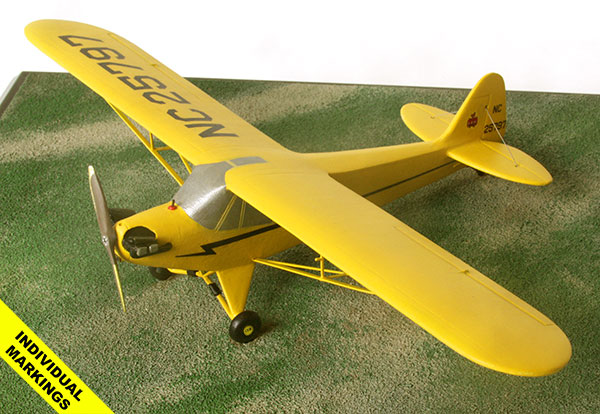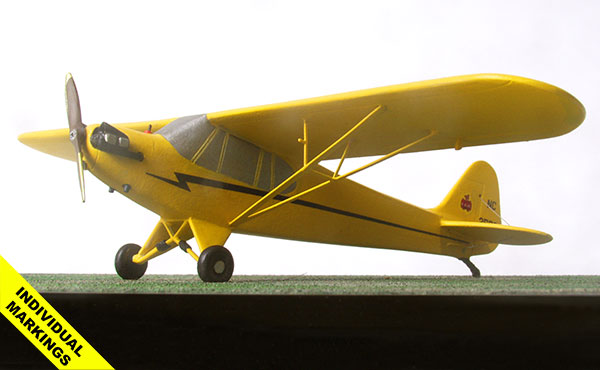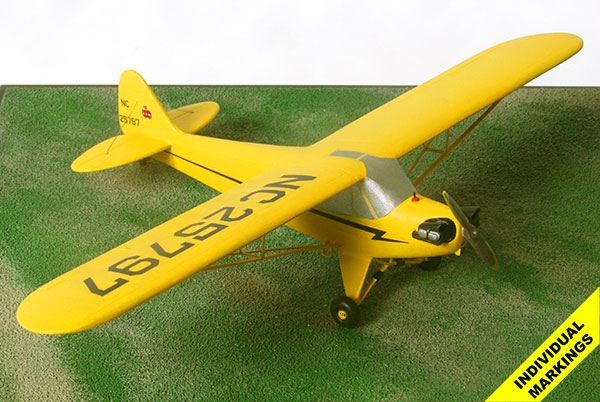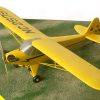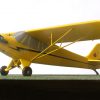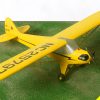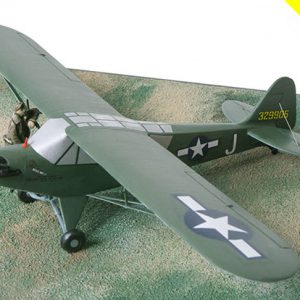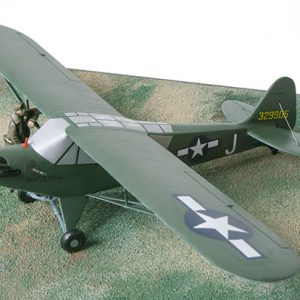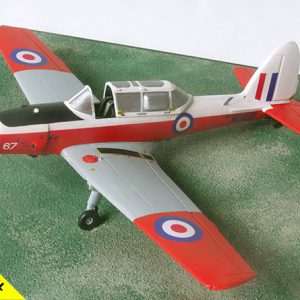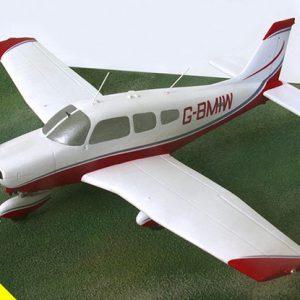Piper J-3 ‘Cub’
First flight Lockhaven 1938
This iconic light aircraft had its origins in the Taylor E-2 Cub, built in 1930 in Bradford, Pennsylvania; when the company went bankrupt it was bought out by Taylor’s principal backer, William T Piper. In 1936 an E-2 was altered by company employee Walter Jamouneau while Taylor was away, and though he fired Jamouneau on his return Piper rehired him, and bought Taylor’s share in the company. About 1,200 J-2s were produced before a fire in 1938 destroyed the factory; when Piper moved the company to Lock Haven the J-3, altered from the earlier version by fairing the fin in to the fuselage structure and substituting a tailwheel for the tail skid, became the production model. It was powered by a 40 hp engine and sold in 1938 for $1000. In production it flew with several engines of varying power from Continental, Franklin and Lycoming.
With the outbreak of the war in Europe in 1939 the United States established the Civilian Pilot Training Program, for which the J-3 Cub became the primary trainer, with 75% of new pilots in the CPTP training on the type; by the end of the war 80% of all US military pilots had received their primary training on Cubs. In 1940 over 3,000 Cubs were built; by the end of the conflict the production rate enabled one to be built every twenty minutes.
The aircraft also served in more overtly military roles. For the basic U S Army L-4, Bill Piper Jr is reported as saying “All we had to do was to paint the Cub olive drab”. Variously designated, according to year and service, as the O-59, L4 and NE 5,413 were built including 250 of the NE version for the US Navy. These, like several other types of similar size and configuration, were referred to collectively as “Grasshoppers”, used like the L-4 for reconnaissance, artillery spotting duties, medical evacuation – in the Cub one patient could be carried on a litter secured lengthways behind the pilot – and transporting supplies. There were even L-4s which, equipped with bazookas, took part in impromptu anti-tank attacks in Northern France.
After the war many were sold as surplus, returning to the designation of J-3. The PA-11 Cub Special was a development which had its engine fully cowled, whereas in the J-3 the cylinders were almost always fully exposed, and the following PA-18 Super Cub was produced by Piper until it sold the design rights in 1981. Cubs are still familiar today in “Cub Yellow” with the cub badge usually on the fin, and can be seen frequently in their homeland on floats.


